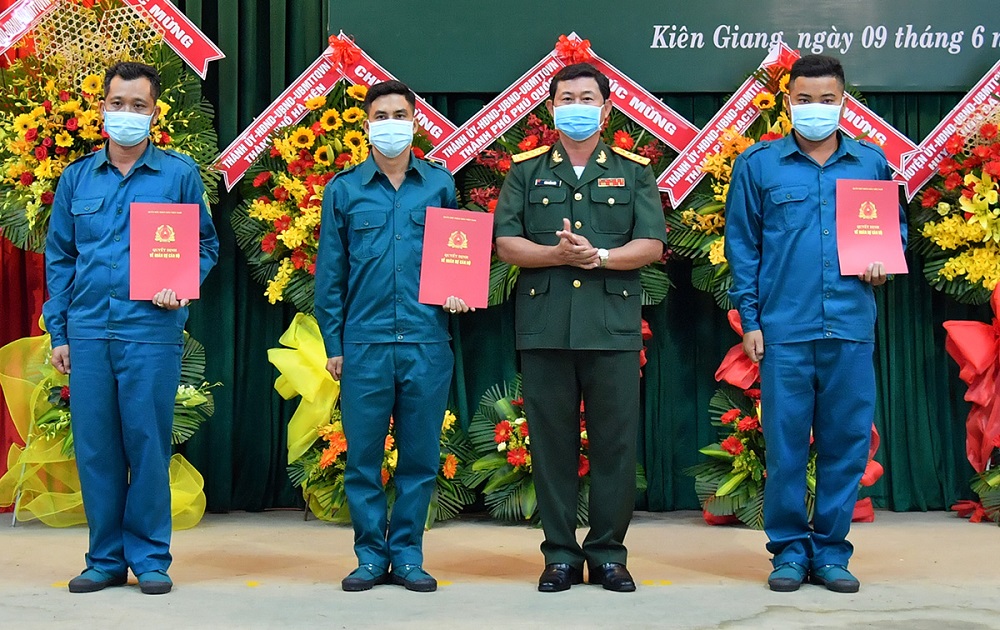A militia squadron was established on June 9 in Vietnam’s southern province of Kien Giang, the largest locality in the Mekong Delta and borders Cambodia.
 |
|
Launching ceremony in Kien Giang Southwestern Province on June 9.
|
The squadron is the first of its kind in the Mekong Delta and the second after the first set up in the southern province of Ba Ria-Vung Tau in April.
Vietnam considered the southwestern waters strategic for both national defense and economic development.
Under the management of the Kien Giang Military High Command, the standing militia squadron is entrusted with two missions of sovereignty protection and economic development.
It is tasked with patrolling, reconnaissance, protecting the sovereignty over the sea and islands, together with marine exploitation.
A part of the maritime militia’s responsibility is propagating people in implementing the law on national defense and security, and on fishing and fisheries protection. At the same time, the squadron conducts patrols and reconnaissance in Kien Giang’s waters to fulfill the sovereignty protection missions.
Addressing the launching ceremony on Wednesday, Major General Truong Minh Khai, Commander of Military Zone No.9, asked the Kien Giang Military Command to provide good facilities and support policies for the personnel.
Kien Giang has an area of 6,300 square km. It has a 56-km borderline with Cambodia and a coastline of 200 km. The province is home to 143 islands, including 43 inhabited ones. Its fishing ground is about 63,000 square km with more than 11,000 fishing boats, the largest offshore fishing fleet in Vietnam.
 |
| Vietnam's Defense White Paper. |
The plan to build maritime militias was made in late 2019 with the establishment of such a force in 14 coastal provinces.
According to the Central Military Commission, the operations of maritime militias are crucial for the protection of territorial waters in the current circumstance.
Militia and self-defense forces are one of the main parts reached in Vietnam’s 2019 Defense White Paper.
In which, the country reaffirms the motto of “defending the Homeland from afar,” which includes exhausting all non-military channels to keep the homeland from being threatened in the first place. While the armed forces remain “at the core” of this system, the goal of the “all-people” defense doctrine is to use these other capacities to “prevent and push back the risks of war.”
It also highlights the “four no’s” policy including no military alliance, no affiliation with one country to counteract the other, no foreign military base in the Vietnamese territory to act against other countries, and no force or threatening to use force in international relations.
Vietnam is resolute and consistent in settling disputes and differences with other countries through peaceful means on the basis of international law.
The country advocates the consolidation and enhancement of the national defense strength of which the military strength plays a core part, ensuring sufficient capabilities for deterrence and defeating any acts of aggression and war. The Vietnam People's Army will be invested with necessary resources to continue playing the central role in the all-people national defense, being made strong enough to protect independence, sovereignty, territorial unity and integrity, national interests, and the socialist regime.
Vietnam accelerates international integration and defense diplomacy, seeking long-term solutions to settle disputes and differences through peaceful means, and contributing to maintaining peace, stability, and prosperity in the region and the world.
Hanoitimes